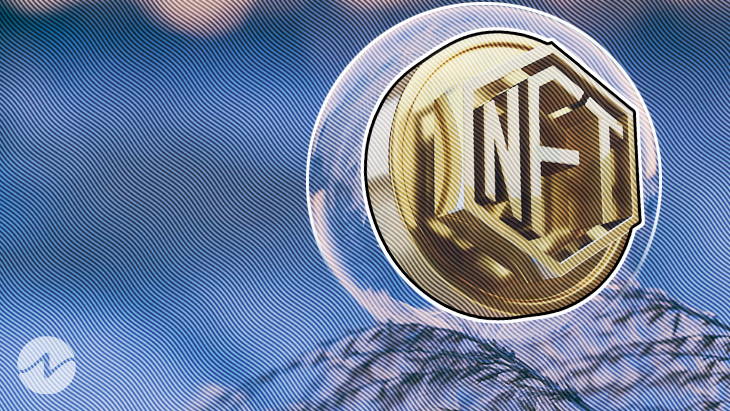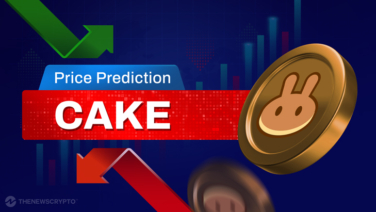- The sharp increase in crypto assets in 2021 only portended a sharp decline in asset prices.
- NFTs, especially those that are artistic, only started to gain popularity in 2021.
If 2020 and 2021 were the falls and summers of crypto, it’s clear that 2022 is crypto’s winter. For people and assets that have been through a crypto winter, this winter is nothing special. It may even be expected in a way. The meteoric rise of crypto assets in 2021 only meant there was going to be a meteoric fall in asset prices.
There is one class of crypto assets that have not been through a crypto winter before. NFTs, especially of the art variety, only got popular in 2021. Ergo, up until now, the NFT market hasn’t experienced any sort of crypto winter. What this meant was that we didn’t know how the market would react to the fall in the price of crypto tokens. Would it fall harder than crypto, generally? Would prices remain stable, or would they be pegged to the prices of some tokens? No one could tell for sure. But now? It appears we have our answers.
Right off the bat, we can say that NFT prices did not remain stable. Prices fell rapidly. Even blue-chip assets like Bored Ape Yacht Club saw prices half. However, in the same vein, some assets experienced spurts of growth.
One might argue that all of this was obvious. After all, NFT is essentially just a kind of crypto token. But there were many reasons to believe that NFTs would fare better than crypto tokens in the market.
For one, NFTs represent a different class of assets. While people buy coins for financial reasons — which means that they also sell for financial reasons, people buy NFTs for sentimental reasons instead. Many of the most valuable NFTs have dedicated communities that don’t necessarily care about the price of the asset, but about the community and the access it gives them.
Someone, for example, may not purchase a Bored Ape because it may have high resale value, but because a celebrity they like has one. It’s the same for lots of other NFTs, especially ones by famous people and beloved artists. Just like traditional art, NFT purchases are often influenced by a mixture of financial reasons and sentimental ones.
Another reason why people expected the crypto winter to have a difference on NFTs is that NFTs, generally speaking, have a much higher barrier to purchase. With crypto tokens, you can download a wallet app and purchase a coin on a centralized exchange.
But with NFTs, you first have to buy coins in the exchange’s native currency before you can purchase the NFT. What this means, at least in theory, is that there would be less FOMO in NFT purchases, which could translate to resilient prices in the long run.
Unfortunately, all those assumptions have been proven false as NFTs are doing just as badly as crypto tokens.
What Now
For investors who thought that NFTs would have more resilient prices, the realization that they were wrong could be sobering. But it doesn’t have to be. The fact that NFT assets do behave, fundamentally, like crypto assets means that their behavior can be predicted. And predictive behavior is a great friend in uncertain times.
Curiously, things may even be worse for NFTs when one looks at them as crypto assets. While many of these NFTs haven’t suffered a devastating drop in value when they are denominated in their native currency, the picture starts to look radically different when one considers the battering that the native coins themselves are taking in the market.
For example, NFTs like the BYAC are down just 52% when compared to the peak ETH price, but in fiat terms, they are down about 80%. The same is true for many other NFTs like Moonbirds and Mutant Ape Yacht Club (MAYC).
Interestingly, investors who think about the value of their portfolios in terms of the native currency of the network and not the underlying fiat are probably not phased by the volatility of the market. These investors are in just the right position to make the most of the appreciation of the value of their tokens when the market eventually flips.
Now that we understand that NFTs are not immune to the moves and shakes of the crypto market, it’s important to plan with that assumption. And that means treating NFTs like crypto assets during a bear run.
While bear runs are undoubtedly financial disasters, they can also be great for the long-term health of an ecosystem. During the bull run of NFTs, everyone and their aunt released NFT projects. Everyone did everything to get an NFT listed on Opensea — even when they didn’t have a thriving community or use case. But since the tide of hype lifts all boats, many of these badly thought out projects get lifted, despite lacking important fundamentals.
This led to an ecosystem where projects with solid fundamentals were having similar showings to ones without. The bear market is already putting an end to that, as many lackluster projects are already on their way to the giant 0. This pattern could very much continue throughout 2022 and even gather momentum in early 2023. When the bull market eventually comes back around, the projects that will be left after the tsunami of this winter will be solid ones. They would be projects that have proven their mettle by standing strong, even during a bear market.
This brings us to another point. If a bull run led to awful projects with bad fundamentals reaching peak prices, does that mean that a bear run would do the inverse? The answer to that is probably yes. Bear runs do not inspire “rug pullers”. Projects that come online right now are ones ready to face the stiff conditions of the market. The fact that the teams behind those projects are ready to launch them during a bear market only means one thing — the fundamentals are rock solid. Of course, this isn’t always true and should not be a golden rule. But if you’re looking to invest in NFTs or crypto, that’s one factor you should consider first. Projects like CryptoChickensNow, for example, were born in the bear market and have extraordinarily strong fundamentals. They could be trading at the lowest they ever will in this market.
In the end, the only thing you can do with NFTs during a bear market is what you do during all bear markets. You buy projects you think are trading at a discount, because many are. And then wait it out. That simple, yet winning strategy has worked for crypto tokens for every bear cycle, and there’s no doubt it will work for NFTs. After all, they both react similarly to price action in the market.
Recommended For You:








